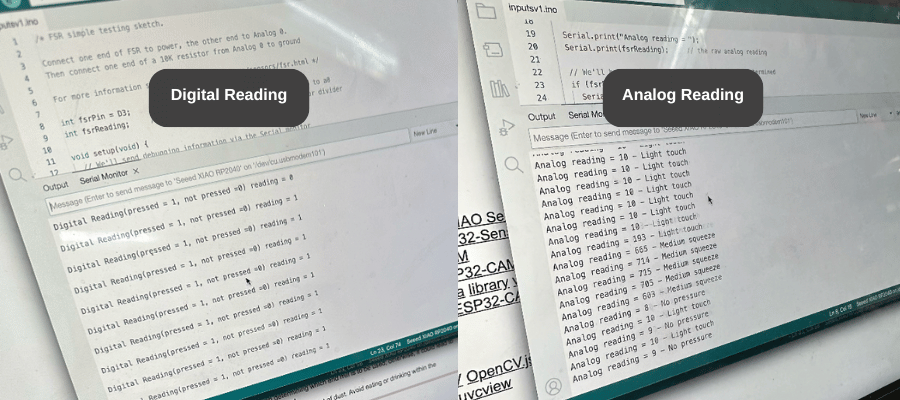

i started with the pcb from electronics production week, which now has a microphone attached to it.
i then ran code from this website to test the code
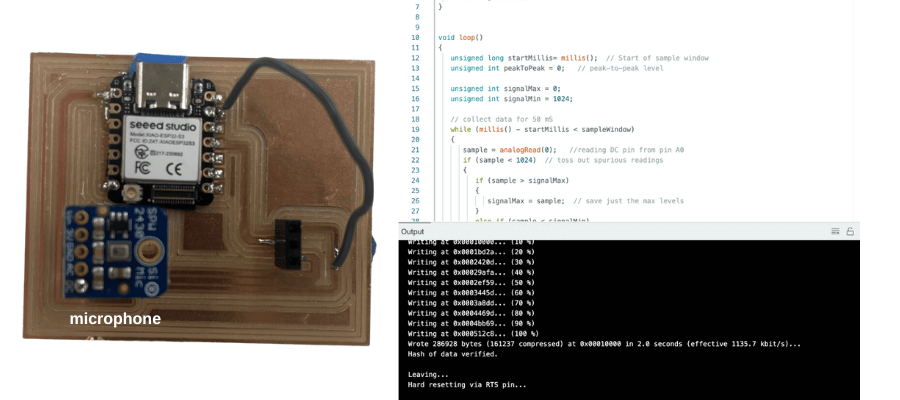
unfortunately, i couldn't get a read from the microphone, because (i think) a trace lifted up on the pcb
i decided to use adafruit force sensors in my final project in place of buttons
to start, i breadboarded the components according to this website
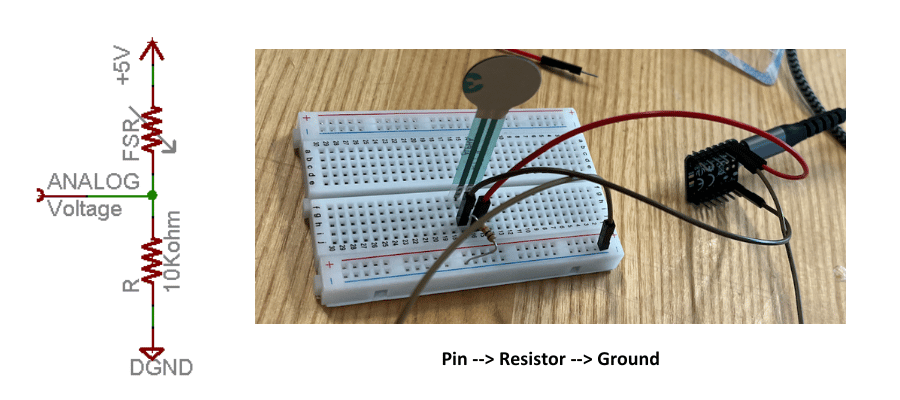
i tested the operations to ensure everything was functioning
int fsrPin = 0; // the FSR and 10K pulldown are connected to a0
int fsrReading; // the analog reading from the FSR resistor divider
void setup(void) {
// We'll send debugging information via the Serial monitor
Serial.begin(9600);
}
void loop(void) {
fsrReading = analogRead(fsrPin);
Serial.print("Analog reading = ");
Serial.print(fsrReading); // the raw analog reading
// We'll have a few threshholds, qualitatively determined
if (fsrReading < 10) {
Serial.println(" - No pressure");
} else if (fsrReading < 200) {
Serial.println(" - Light touch");
} else if (fsrReading < 500) {
Serial.println(" - Light squeeze");
} else if (fsrReading < 800) {
Serial.println(" - Medium squeeze");
} else {
Serial.println(" - Big squeeze");
}
delay(1000);
}
then, i added the sensor to a pcb
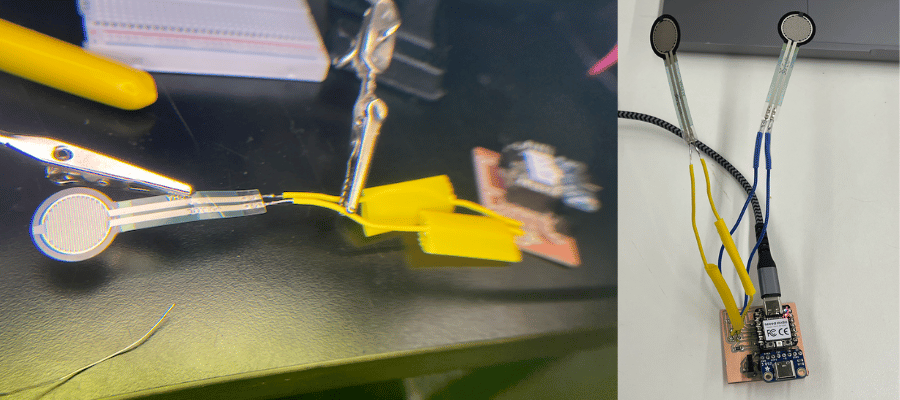
i then tested with a multimeter to ensure everything was working well. surprisingly, the ground and pin traces don't appear to share current which kind of makes sense but also doesn't make total sense to me.
then, using the same code as above, i measured the inputs by pressing on the sensor a bunch
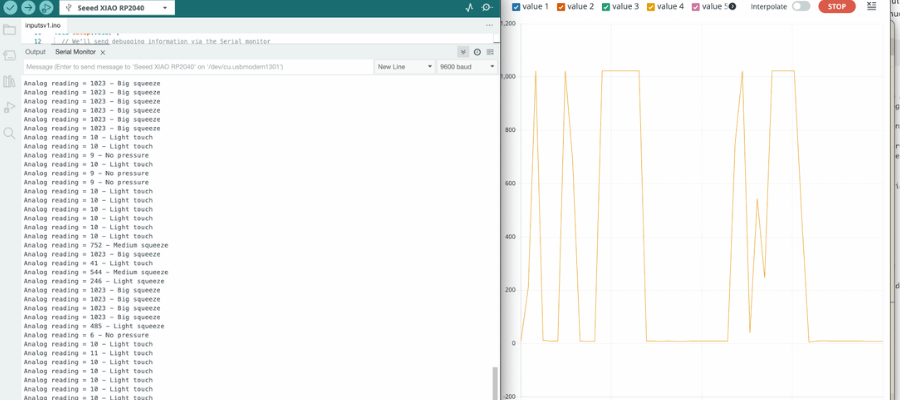
what was curious is that the force sensors are hyper-sensitive, so even when it's not touched, it registers some activity. this could also be due to changes in current, as gail explained
fletcher and i measured the analog (same as above) and digital readings of the FSR
